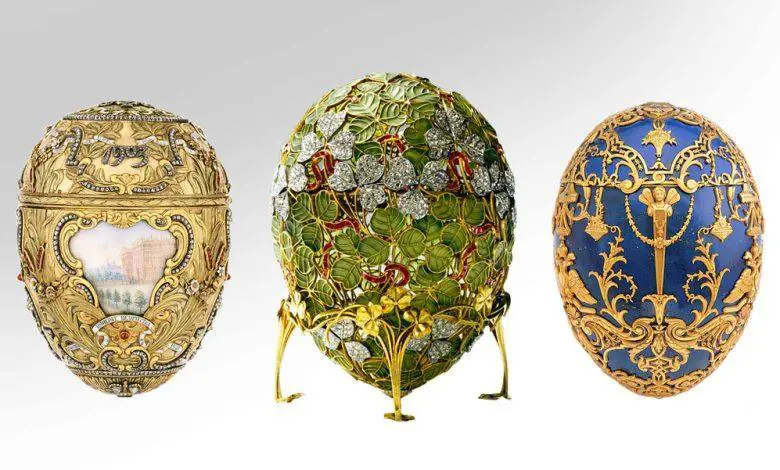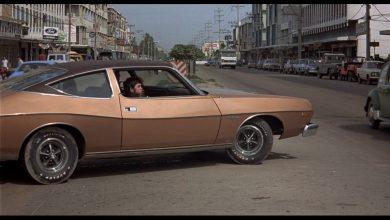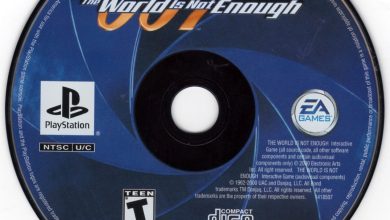
When it comes to amazing eggs, there’s no place quite like Grady’s Faberge Egg Shop. For over 35 years, we’ve been creating some of the most intricate and detailed eggs you’ll ever laid eyes on. Each one is a work of art, and we’re always coming up with new and innovative designs to keep our clients coming back for more.
Whether you’re looking for a traditional Russian Faberge egg or something a little more modern, we’ve got you covered. We’ve got eggs in all shapes and sizes, and we’re always happy to custom design something to your specific tastes.
If you’re looking for a unique gift for someone special, or just want to treat yourself to something beautiful, make sure to stop by Grady’s Faberge Egg Shop. You won’t be disappointed!
Why do you find eggs in museums?
Eggs are often found in museums because they are a very old food source that has been used by humans for centuries. They are a good source of protein and can be easily stored and transported, making them ideal for long journeys or for times when food is scarce.
Eggs were also used in ancient times as a symbol of fertility and new life, which is why they are often found in museums alongside other ancient artifacts. Some cultures believed that eggs had magical powers and could be used to ward off evil spirits or to bring good luck.
today, eggs are still a popular food choice and can be found in many different cuisines. They are a versatile ingredient that can be cooked in many different ways, making them a favorite of both home cooks and professional chefs alike.
So why do you find eggs in museums? Because they are a delicious and nutritious food that has been part of human history for centuries!
What is the difference between a Faberge egg and one that was made by another craftsman?
Answering the question of what makes a genuine Fabergé egg and one made by another jeweler is not as simple as it may first appear. First, it is important to understand that there were never more than 50 made by Peter Carl Fabergé and his workshop over a period of almost 30 years from 1885 until his death in 1916. The majority of these were made for the Russian Tsars Alexander III and Nicholas II as Easter gifts for their wives and mothers.
The most immediate difference between a Fabergé egg and one made by another craftsman is the quality of workmanship. Every detail in a Fabergé egg is perfect, down to the smallest pearl or diamond. The enamel work is exceptionally smooth and the gold work is incredibly intricate. The eggs are also often quite large, with some measuring over 12 inches tall.
Another difference between Fabergé eggs and those made by other jewelers is the use of hidden mechanisms. Many of the eggs contain a hidden clock or music box, and some even have miniature portraits that can be viewed through a small hole. The mechanism must be wound in order for it to work, and this can usually be done by twisting the egg in a certain way.
The last, and perhaps most important, difference between a Fabergé egg and one made by another craftsman is the price. A genuine Fabergé egg can sell for tens of millions of dollars, whereas a replica made by another jeweler would only be worth a few thousand at most.
So, in summary, the main differences between a Fabergé egg and one made by another craftsman are the quality of workmanship, the use of hidden mechanisms, and the price.
Where are Faberge eggs from?
Faberge eggs are some of the most iconic and well-known works of art in the world. These ornate, jewel-encrusted eggs were created by the House of Faberge in the late 19th and early 20th centuries.
Faberge eggs were originally made for the Russian imperial family. The first egg, created in 1885, was a gift from Tsar Alexander III to his wife, the Tsarina Maria Feodorovna. The egg was designed to resemble a real hen’s egg, but was made of gold and enamel, and contained a golden yolk and a diamond-encrusted hen inside.
Over the next few years, Alexander III commissioned a further 52 eggs from Faberge. These were given to the Tsarina and other members of the imperial family as Easter gifts. The most famous of these is the “Imperial Coronation Egg”, which was created in 1897 to mark the Tsarina’s coronation.
After the Russian Revolution in 1917, the imperial family were overthrown and the production of Faberge eggs came to an end. However, the House of Faberge continued to make jewellery and other objects until it was nationalised by the Soviet government in 1918.
Nowadays, Faberge eggs are highly sought-after by collectors and can sell for millions of dollars. The largest collection of Faberge eggs is owned by the British royal family, who inherited them from the last Tsarina, Alexandra Feodorovna.
Where can you find authentic Faberge eggs?
Faberge eggs are some of the most iconic and exquisite pieces of art ever created. The House of Faberge was founded in 1842 by Peter Carl Faberge in St. Petersburg, Russia. For over 50 years, the House of Faberge produced some of the most intricate and beautiful jewelry and objets d’art. The most famous of these are the Faberge eggs, which were created as Easter gifts for the Russian imperial family.
Nowadays, Faberge eggs are highly coveted by collectors and connoisseurs of fine art. But where can you find authentic Faberge eggs?
The first place to start your search is at auction houses. Sotheby’s and Christie’s, two of the world’s largest auction houses, regularly offer Faberge eggs for sale. But be prepared to pay a hefty price! These auction houses typically only offer the most rare and valuable Faberge eggs, so unless you’re a serious collector with deep pockets, you’re unlikely to find an egg within your budget.
If you’re looking for a more affordable option, there are a number of reputable dealers who specialize in selling antique and vintage Faberge eggs. These dealers typically have a wide selection of eggs to choose from, so you’re sure to find one that fits your budget and taste.
Finally, if you’re willing to take a gamble, there are a number of online auction sites where you can sometimes find Faberge eggs for sale. However, it’s important to exercise caution when buying anything online, as it’s easy to be scammed. If you do decide to go this route, make sure to do your research and only buy from reputable sellers.
With a little patience and perseverance, you’re sure to find an authentic Faberge egg that you’ll treasure for a lifetime!
What is a Faberge Egg Guild?
A Faberge egg is a jeweled egg created by the famous jeweller Peter Carl Faberge. Eggs were a traditional symbol of spring and new life, and were often given as Easter gifts. The first known Faberge egg was created in 1885 for Tsar Alexander III of Russia as an Easter gift for his wife, the Tsarina Maria Feodorovna. The egg is made of gold, with a base of rock crystal, and is decorated with diamonds, rubies, and emeralds.
The original egg is now in the collection of the Kremlin Armoury Museum in Moscow. However, there are many other examples of Faberge eggs around the world, including some that were created for other members of the Russian imperial family, as well as private individuals.
Faberge eggs are now highly prized collectibles, and the value of a single egg can easily exceed $1 million. Many of the original eggs have been lost or stolen over the years, making them even more valuable.
The term “Faberge egg” has also come to be used more broadly to describe any jeweled egg, regardless of whether it was actually made by Faberge.
How did the tradition of Faberge eggs originate?
The tradition of creating and gifting Faberge eggs originated in Russia in the late 19th century. The first Faberge egg was created in 1885 by Peter Carl Faberge for Tsar Alexander III as an Easter gift for his wife, the Tsarina Maria Fedorovna. The egg was crafted from gold and enamel and contained a hidden surprise inside – a golden yolk which, when opened, revealed a golden hen.
The egg was so well-received that Faberge was commissioned to create another egg the following year. And so the tradition continued, with a new Faberge egg being gifted each Easter until the outbreak of World War I in 1914. Following the revolution, the tradition came to an end.
Faberge eggs are now highly sought-after collectibles, with some of the most famous and valuable examples fetching millions of dollars at auction. Today, the House of Faberge – which is now owned by jeweler, gemologist and watchmaker, Lev Leviev – continues to create stunning pieces in the same style as the original Faberge eggs.
Do I need to know how to make an authentic Faberge egg?
As the world becomes more and more competitive, people are looking for ways to stand out from the crowd. For some, this means learning how to make an authentic Faberge egg. But is this really necessary?
First of all, it’s important to understand what a Faberge egg is. These eggs are jeweled and ornate, and were originally created by Peter Carl Faberge in the late 19th century. They were often given as gifts to royalty or other high-ranking officials, and were seen as a symbol of wealth and power.
Nowadays, Faberge eggs are still seen as a symbol of luxury, and they can be quite expensive. If you’re interested in purchasing one, it’s important to do your research to make sure you’re getting a genuine egg. There are many imitations on the market, and it can be difficult to tell the difference.
If you’re interested in making your own Faberge egg, there are a few things you’ll need to know. First, you’ll need to find a jeweler who can supply you with the necessary materials. Second, you’ll need to have some sort of design in mind. The best way to do this is to look at examples of other Faberge eggs and get inspiration from them.
Once you have the materials and the design, you’ll need to start working on the egg. This can be a difficult and time-consuming process, so it’s important to be patient. You’ll also need to be very careful, as even small mistakes can ruin the egg.
Once you’ve finished creating the egg, it’s time to show it off! You can do this by entering it into competitions, or simply by displaying it in your home. Whichever way you choose to showcase your egg, it’s sure to impress anyone who sees it.
So, do you need to know how to make an authentic Faberge egg? That depends on what you’re hoping to achieve. If you want to purchase an egg as a symbol of luxury, then it’s important to do your research and make sure you’re getting a genuine egg. However, if you’re interested in creating your own egg, then you’ll need to put in the time and effort to learn the necessary skills.

The best egg-shaped jewelry box
QIFU Faberge Egg Style Jewelry Box
QIFU’s Faberge Egg Style Jewelry Trinket Box is a beautiful and unique gift for home decor. It is hand-painted with enameled details and has a hinged top that opens to reveal a hidden compartment. This trinket box is the perfect way to add a touch of elegance to your home decor.
Perfect box for the egg
Unique design
Easy travel
Hand-painted finish
Decorative and functional as a jewelry box
Rattle when rattled
Composition becomes brittle over time
Weight: 8 oz
Design: Inspired by Faberge Egg
Size: 2.24 * 2.24 * 4.33 in
Material: Metal, zinc alloy
Recommend usage: Easter, Christmas, New Year, Birthday, Thanksgiving
Brand: QIFU








